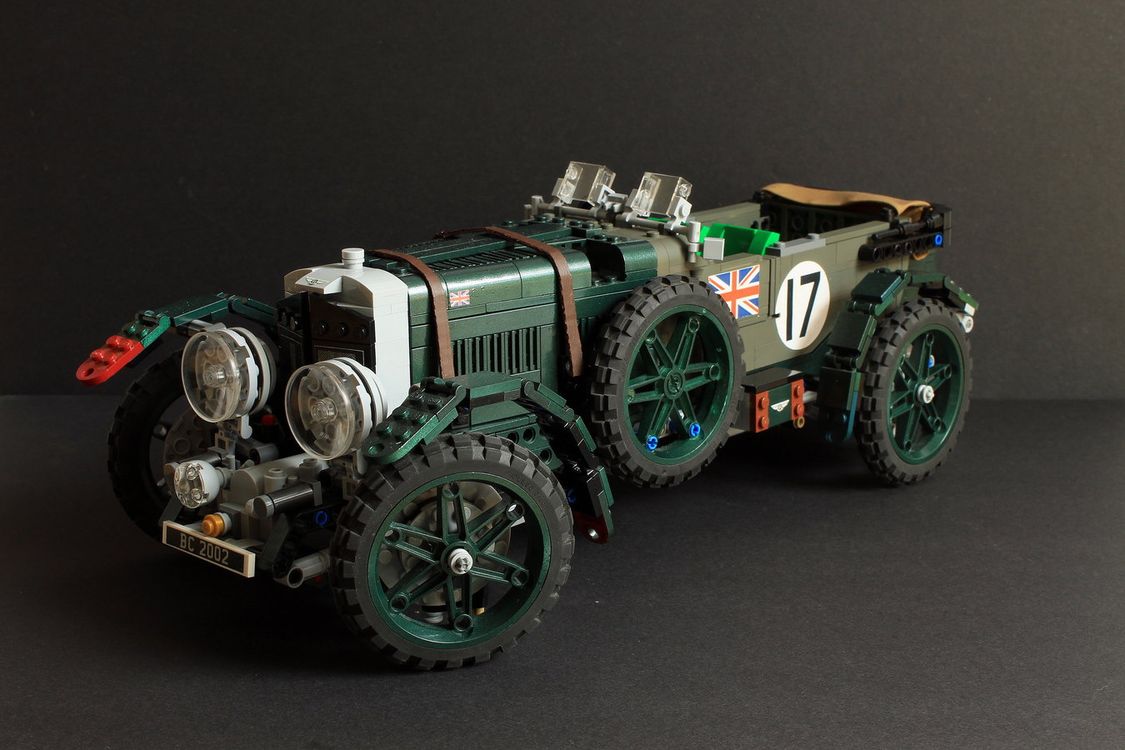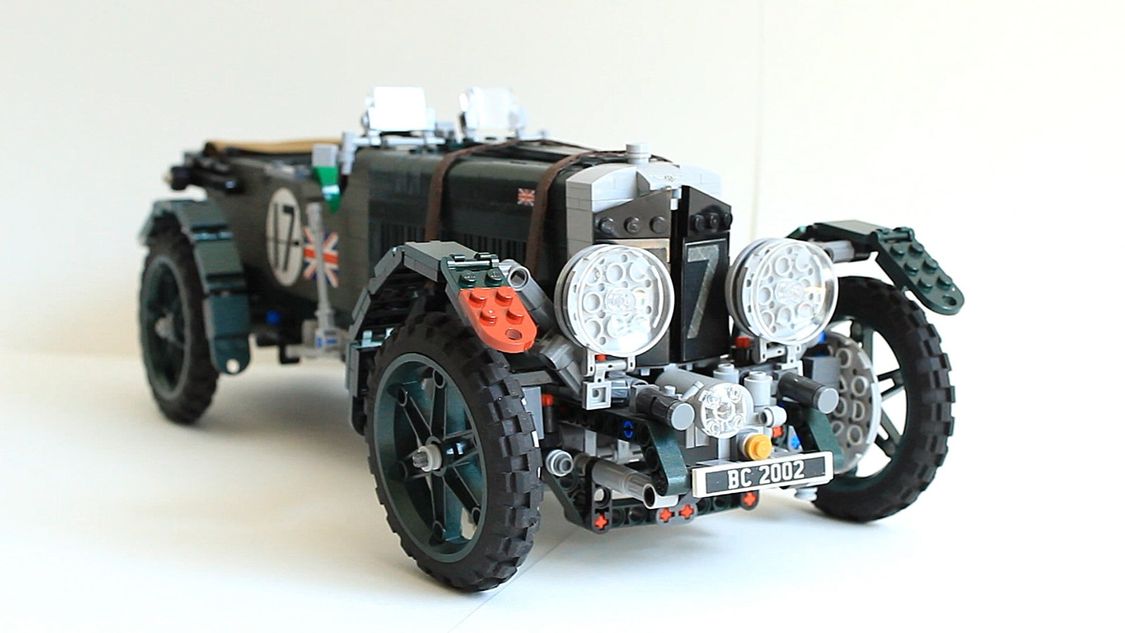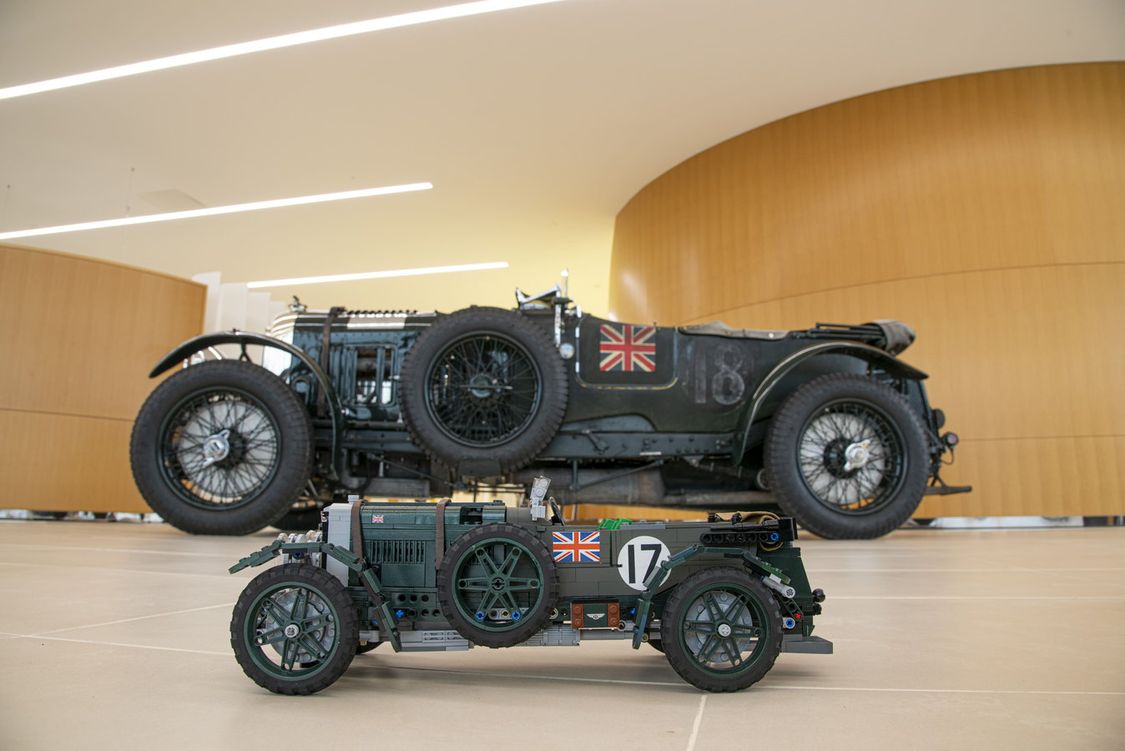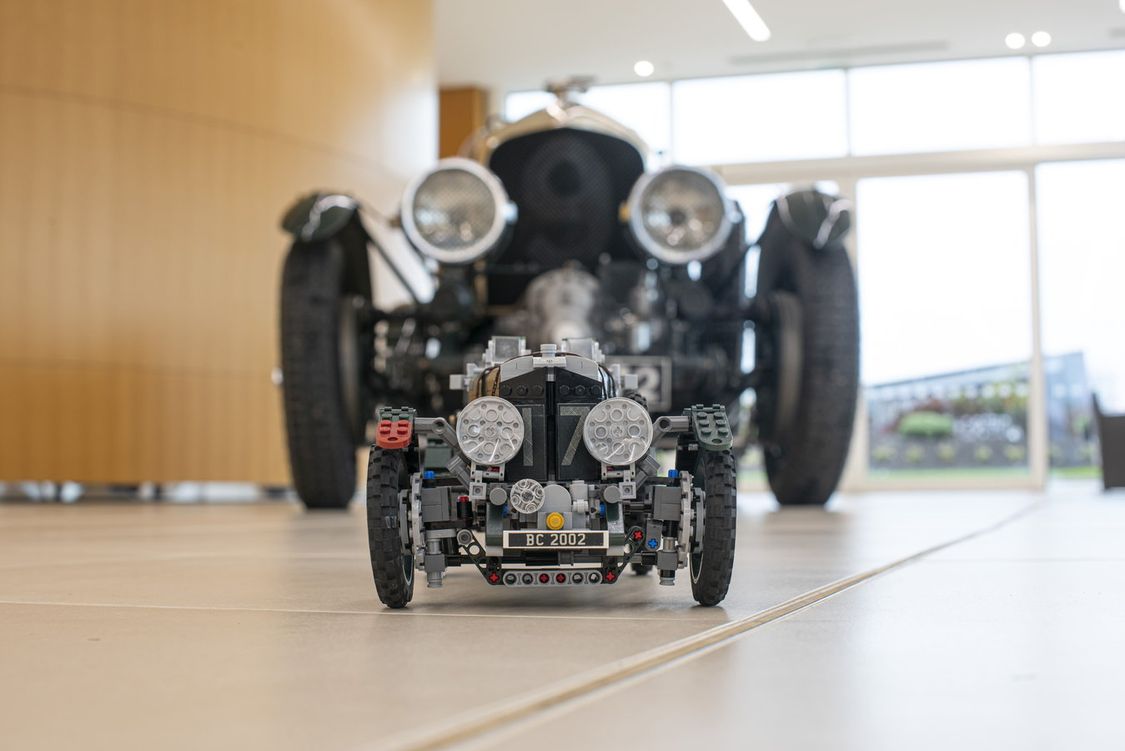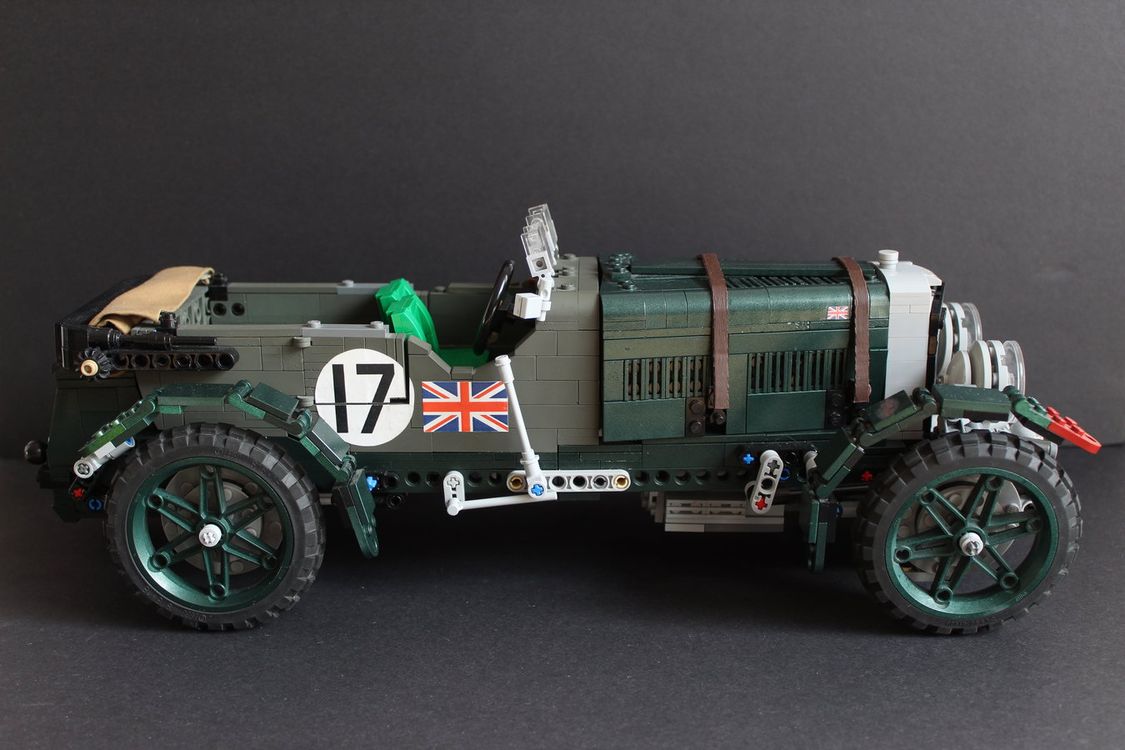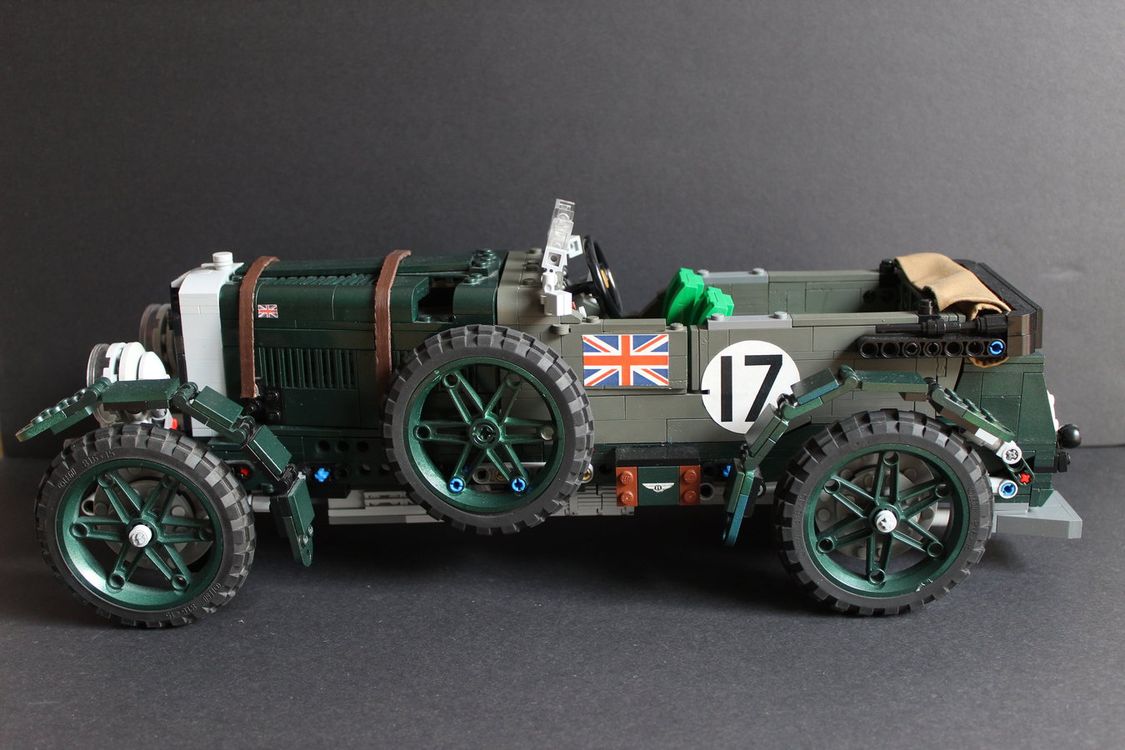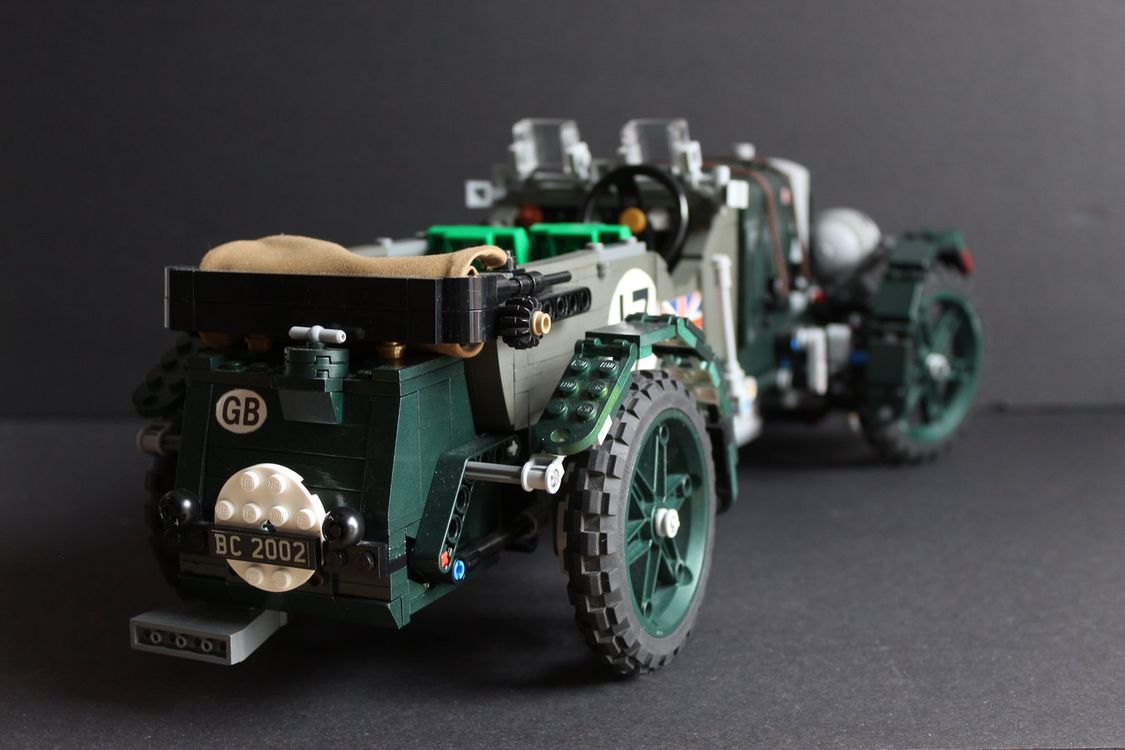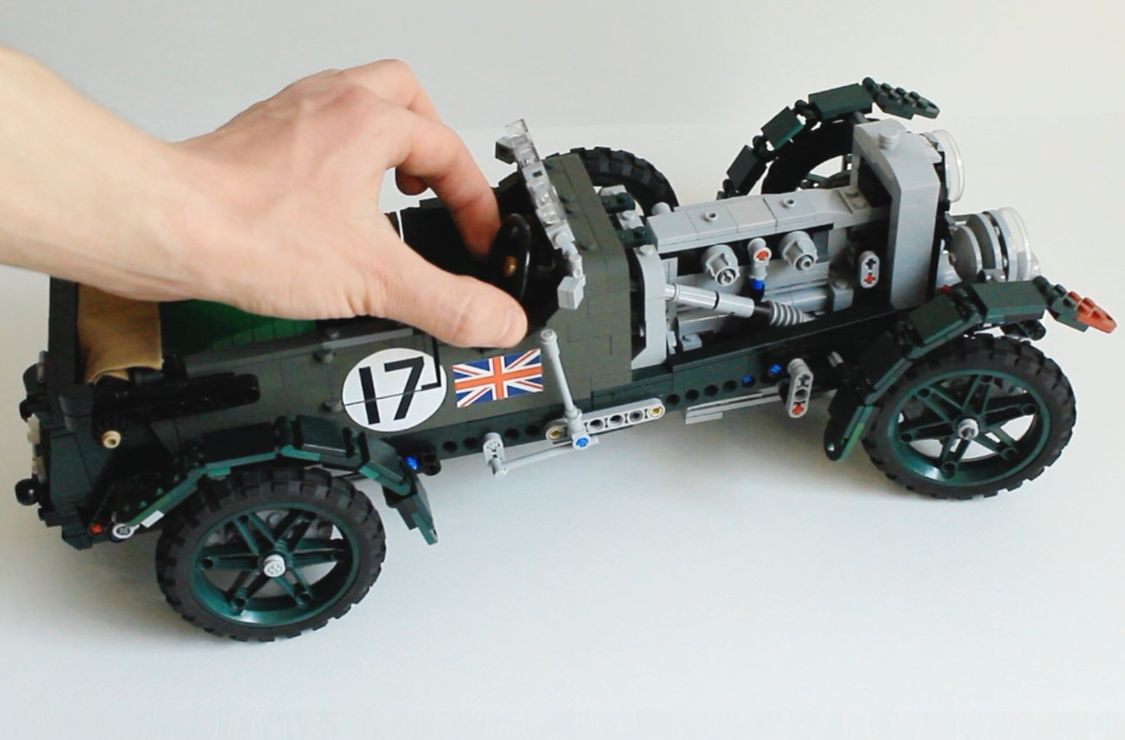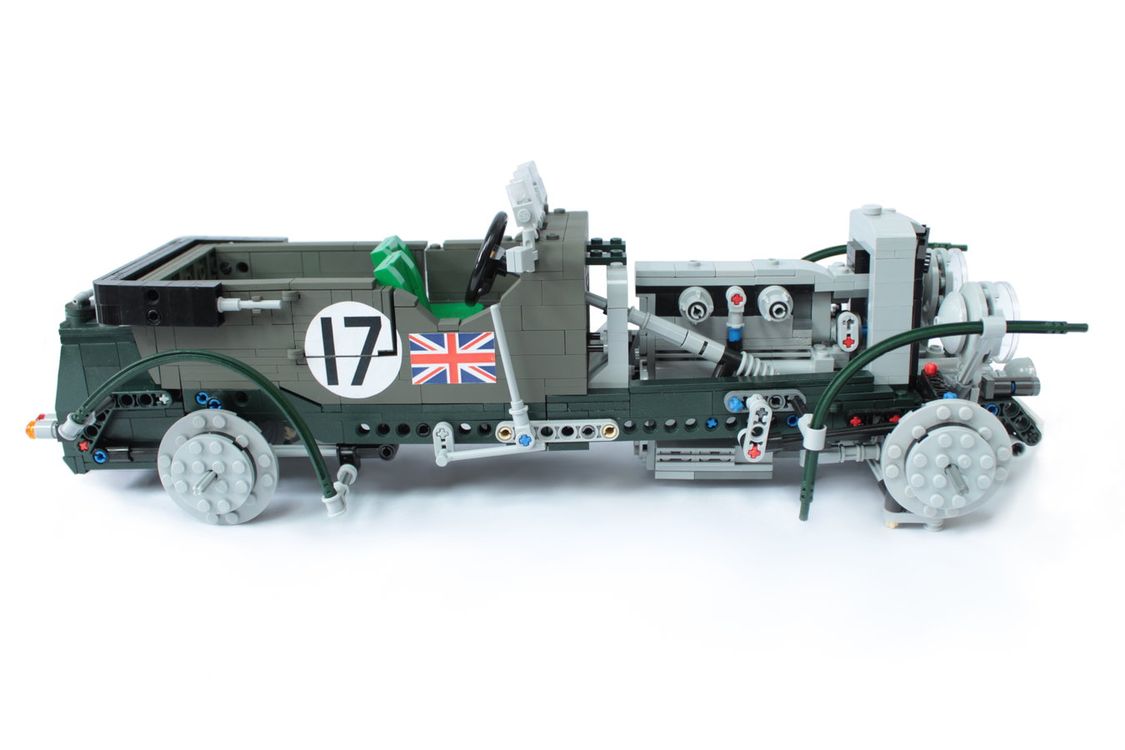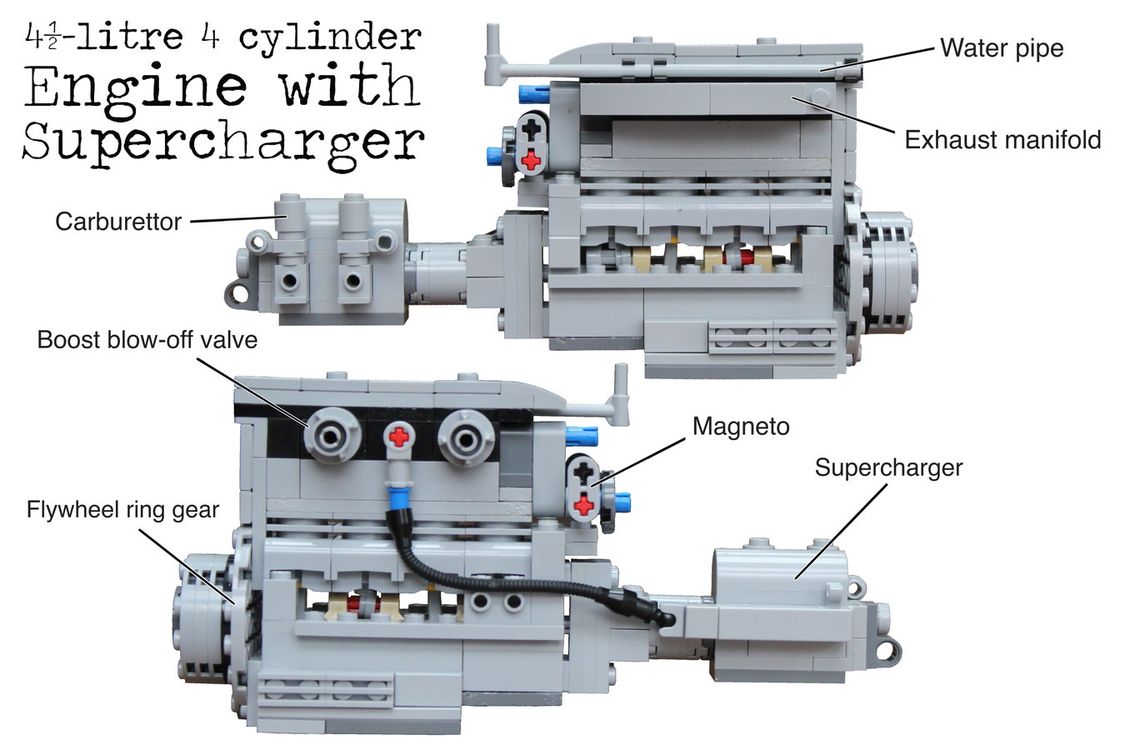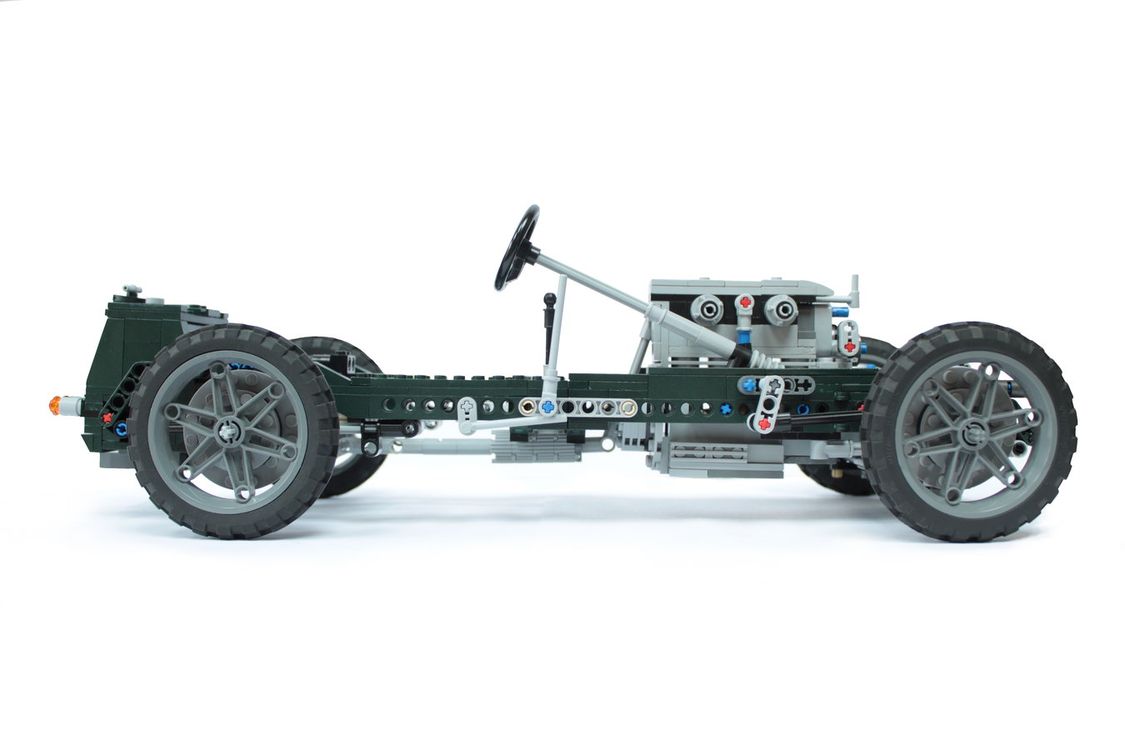4½升1927-31宾利“鼓风机”
4½-Litre 1927-31 Bentley ‘Blower’
作者:bencroot19 / 发布于:2019-04-15
Welcome to my project and thank you very much for looking,
The Bentley 4.5-litre was an iconic British racing car, known not for racing victory but for the sheer thought of one crossing the finish line with Bentley's courageous drivers at the wheel. The supercharged models, referred to as Bentley 'Blowers', added an excitement to the car and its races that the normal model may not have achieved on its own. It is just one of many racing legends.
Notable features:
- The model combines Lego bricks and Technic.
- Two new green colours, a dark racing green (chassis, fuel tank, wheels and bonnet) and a camouflage green (rear car body).
- Working steering function that mimics the real mechanism on the car.
- Removable bonnet reveals the engine and steering column, with the suggestion of new bonnet straps.
- Tilted front wheels/positive camber.
- Rear differential is linked to the engine, meaning the engine crankshaft will turn when the car is pushed along.
An insight to the Bentley's Racing History:
In 1923 the first 24-hour race at Le Mans in France was held, back then it was seen as more of an endurance test for cars rather than a race, the Bentley 4.5-litre won the Le Mans race once in 1928, it was famous not for racing victory but for its many speed records, reliability and racing situations/stories.
Originally the Bentley racing cars used a 3-litre engine but by 1927 they were lacking in power to cope with new competition- the car was reworked into a 4.5-litre model. In 1927 two 3-litres and the new 4.5-litre were entered at Le Mans, however during the race there was a major crash that knocked out two of the three Bentley's, including the 4.5-litre, the remaining 3-litre went on to finish the race. The following year (1928) all three Bentley's entered were 4.5-litre models. Over the course of the race, one suffered a puncture and another cracked its chassis frame, the remaining Bentley was in second place and it too was in danger of sustaining damage. They overtook the lead car when as it was refuelling but towards the end of the race the chassis became distorted and the driver slowed down to carefully complete the final laps, still finishing 8 miles ahead of the other cars.
Motor Sport
described it too be
'one of the finest road races ever staged'
. The next year victory didn't go to a 4.5-litre model, despite four being entered, but the new 'Speed Six' (6.6-litre) model.
In the 1930 Le Mans the specific car that I've built was entered-
The Bentley 'Blower'
, a project lead by one of Bentley's victorious drivers 'Tim' Birkin that involved supercharging the 4.5-litre engine to increase power. During the 4.5-litre's production (1927-1931) 720 normal models were made compared to 55 supercharged 'Blower' models. Over its racing time the car certainly gained a reputation for unreliability- unlike the normal 4.5-litre model. During a race at Brooklands in 1929 the cars body caught fire because of a cracked exhaust, nonetheless it was put out and Birkin carried on racing, following the incident his car was re-bodied into a streamlined red shell, that was called the Bentley Blower No.1. The funny thing is, W.O Bentley, the company's founder always disapproved of supercharging the 4.5-litre, he said it would 'corrupt its performance' yet it went ahead and happened anyway. Two of the 'Blower' models (the exact car that I've built) were entered in 1930 alongside the three main 6.5-litre cars. Birkin (in a 'Blower' 4.5) drove aggressively and in doing so ripped a tyre, it was quickly changed and he set off again only 11 seconds behind the lead German car, as they were neck and neck the Bentley suffered tyre damage again and dropped back in the race. Despite Birkin setting the lap record, both the Bentley 'Blowers' were out of the race by the 21st hour due to various damages, underlining the cars unreliability. During the same year, Birkin raced a Bentley 'Blower' in the French Grand Prix and, to everyone's amazement, finished second behind a much lighter Bugatti type 35. Ettore Bugatti was annoyed with the Bentley's performance, calling it the
'fastest lorry in the world'
.
At full speed the Bentley 'Blower' consumes 4-litres in a minute...
The Making Process:
I started this project in August 2018 and its taken me around eight months of on and off progress to complete. I’ve spent countless hours redesigning every part over and over again, from rebuilding the entire chassis to the small details on the engine in order to recreate the most accurate representation I possibly could. First, I built a sort of 'prototype' model using parts of all different colours, once this was complete the next task was to get the car into the correct colours, I took the model apart into sections and figured out which parts I had to order and which needed to be sprayed. Once the parts had arrived, I built the sections made up of existing Lego colours and took apart, piece by piece, the bricks that needed spray painting. The original model was photographed so that I could remember how it all fit together. I sprayed all the parts in either a dark racing green or camouflage green, then built the whole model back together again. Accuracy and detail have definitely been the key factors throughout the project.
Working steering:
A lot of my time was spent perfecting the steering function, it mimics the real life mechanism, has a good turning circle and works alongside the tilted front wheels. The steering mechanism used in the Bentley is called ‘worm and wheel’, a spiral gear on the steering column is interlocked (at an angle) with a small gear attached to a steering linkage, the steering linkage is then attached to the right front wheel hub which is connected to the left wheel hub using a another linkage. Look at the chassis photography to see what I’m talking about.
Thanks for reading and your support is much appreciated...
